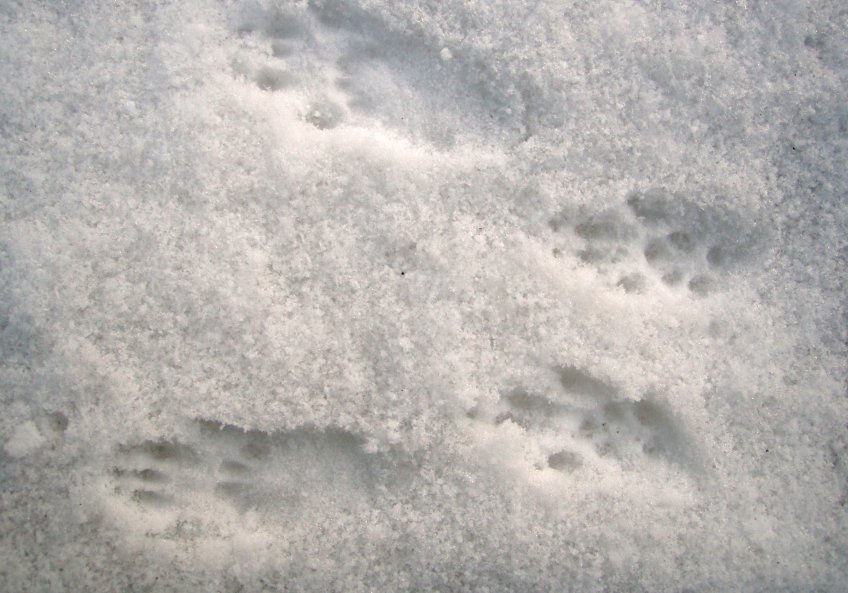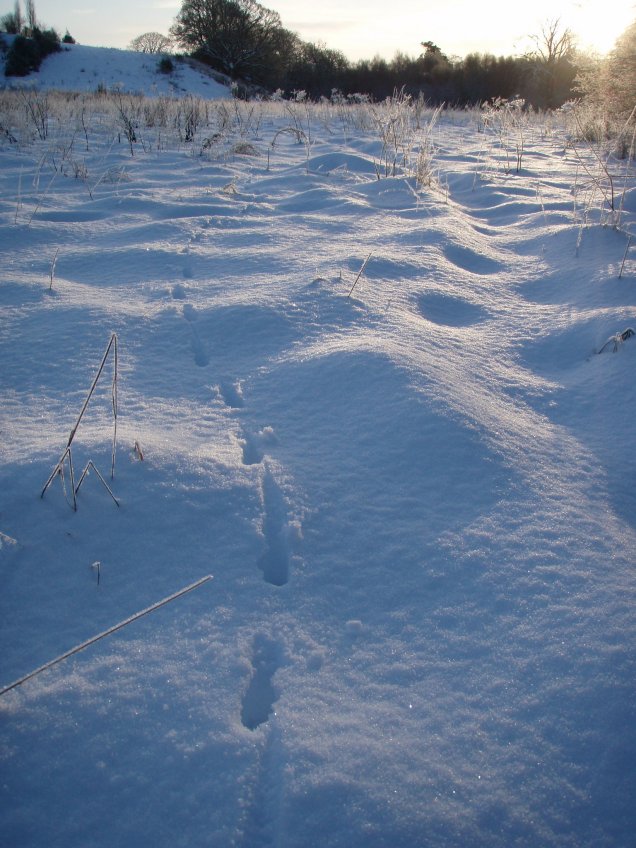Snow Tracking – A Healthy Obsession
If there’s snow on the ground right now, read this and then drop everything. The to-do list can wait, the Internet will be there when the snow’s thawed – tracks are calling!

A layer of overnight snow is like a newspaper, revealing the comings and goings of our local wildlife. There are fascinating columns reporting who’s passed by, what they’ve been up to, who’s been eating what, and much more.
There’s nothing like the ‘crunch squeak, crunch squeak’ of boots in the snow; the crisp fresh air; the low winter sun highlighting footprints in sharp relief. You are following the direct and purposeful tracks of a fox, its oval feet placed almost in a straight line. It reaches a fence – higher than your waist – and crouches, then clears it in a single standing leap. It carries on along its way, and pauses. There are clear marks of nose and forefeet breaking though the snow, a few spots of blood the only remaining sign of the luckless vole beneath . . .
Whether you live in town our countryside, when the snow’s down (and even when it’s not), you can track anywhere. If you’re into wildlife then a walk to a local park can turn into your own, personal Winterwatch. Even in built up areas I’ve tracked grey squirrels, foxes, rats, pigeons, cats, dogs, blackbirds and more.
So if there’s snow on the ground (or even if there’s not), get suitably kitted up and head outside. Go on your own (let someone know where you’re going), with friends, kids … anyone who’ll come!

Here are a few tips that will help you get more out of tracking:
- Be curious. Ask ‘Who, what, when, where, why, how?’ to work out the stories in the snow;
- Look at footprint shape and size, number of toes, presence or absence of claws. Get to know the tracks of all the animals in your area;
- Look up, and listen! Don’t get so wrapped up in the ground that you miss the other signs, and wildlife, all around. Take care not to disturb the wildlife you track. Listen for bird alarms which can tell you the whereabouts of foxes, sparrowhawks and other predators.
- If you’re new to tracking, snow is a great place to start, but mud and sand are also good. Check out The Field Studies Council’s A Guide to British Mammal Tracks and Signs and Animal Tracks and Signs by Preben Bang and Preben Dahlstrøm.
Tracking is great fun, and can teach us loads about the wildlife in our area, and you can send your findings to your local biological records centre; (these records are essential for long-term conservation efforts). A word of warning: once you’ve been bitten by the tracking bug, you have it for life … but you’ll be glad you do!
For more information and to see the tracking and other courses Dan runs, visit www.danpuplett.net

